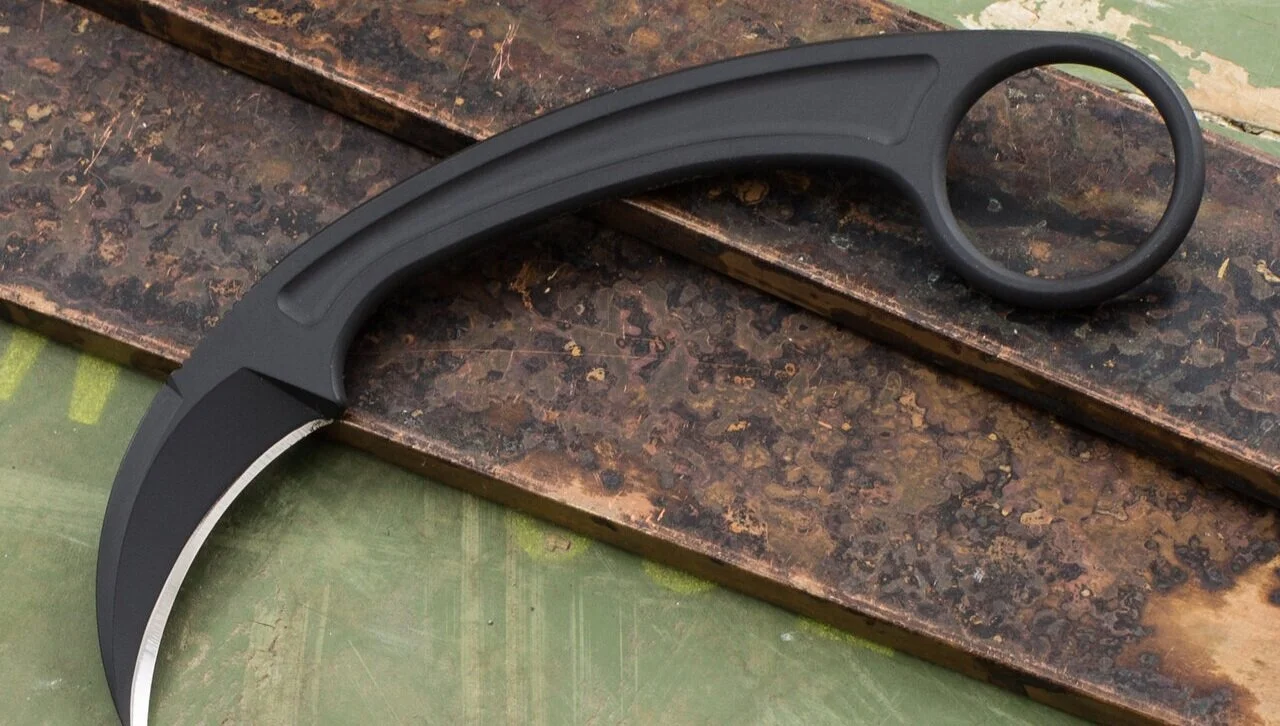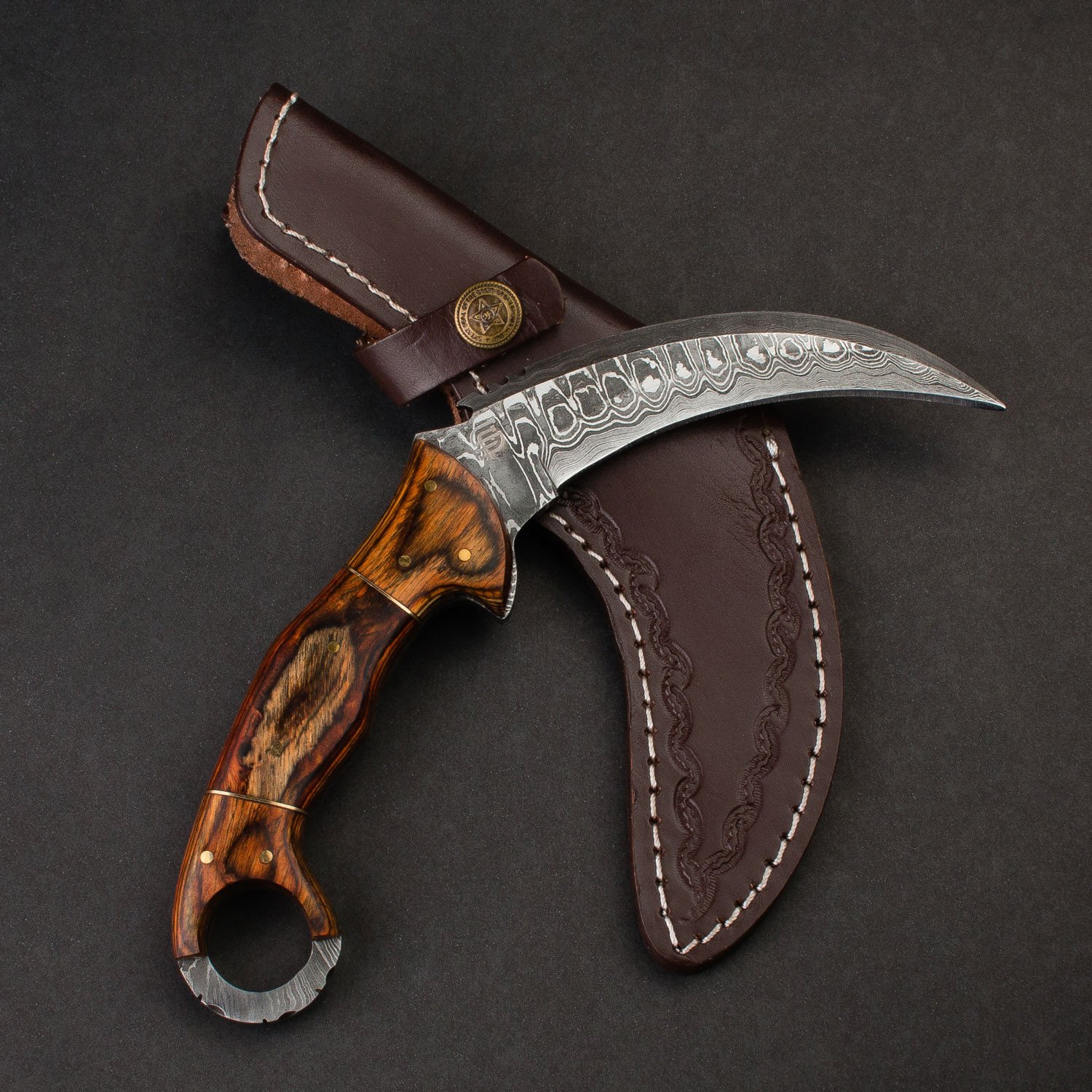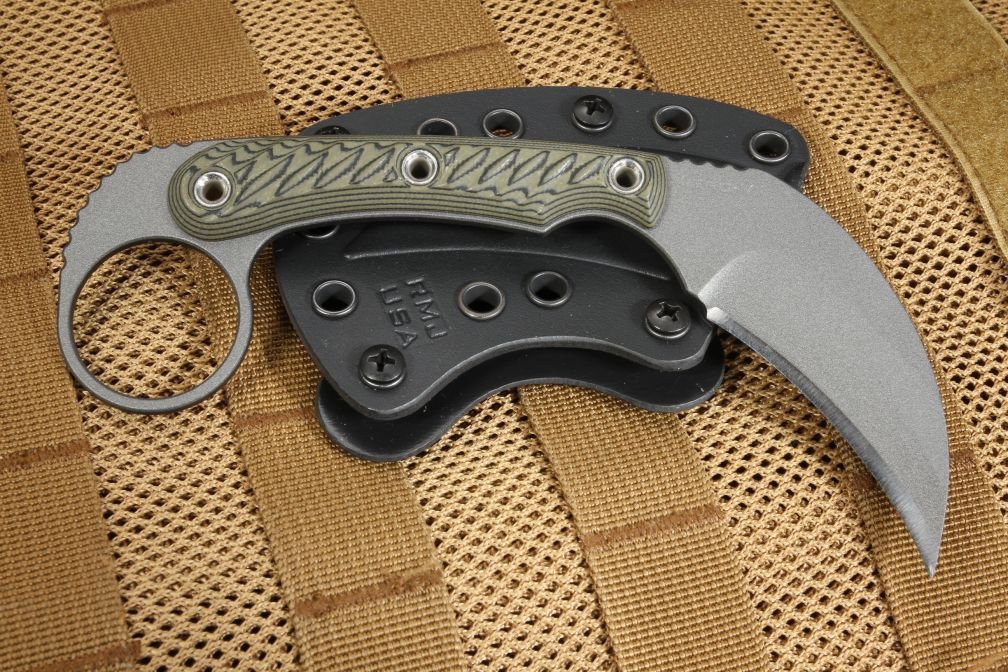Your Ultimate Guide to the Karambit Knife 2024
Everything you need to know about the Karambit knife of Indonesian Pencak Silat
Authors: Steve Hanafi (Silat Sharaf Practitioner, Malaysia), and Pendekar Hussein (Founder of TUS & Pencak Silat Sharaf)
Traditional Silek demonstration with the Sarong, another famous weapon of the Panglima Minang (Minang warriors)
Pendekar Hussein visiting Minangkabau on a research trip. Stay for the Silat, enjoy the amazing food and warmth of the people as well.
Traditional Minang architecture in Negeri Sembilan, Malaysia. Many Malays from that state can trace their ancestry to Minangkabau, hence the influence on food, culture, and architecture.
If you’re like many people, you must’ve been wondering, what’s the hype with this claw-shaped blade in Silat Martial Arts? The awesome karambit knife! Why is it so popular? Why are you seeing it almost everywhere now? Why is it in the movies and also in video games? What’s so special about this blade? In this article we’ll explore why the karambit knife is so famous and why, in our opinion, it’s the best knife for close combat.
Want to see the best Karambit knife to carry? Click Here
Origins of the Karambit
The Karambit originated in western Sumatra, Indonesia, where it was used by Orang Minang (Minangkabau people). Orang Minang are famous for their harimau (tiger) systems of Pencak Silat, known locally in Bahasa Minang (Minang dialect) as “Silek” and widely practiced by the people for generations. Orang Minang can also be found in the brother country of Malaysia, specifically in the state of Negeri Sembilan where Minang food, culture, architecture, and the traditional karambit knife are always present.
The exact shape, size, and material have changed over time as it was adopted by warriors and the royal guards, but contrary to popular belief, the karambit knife was never a farming tool or tool of labor. It was a tool of the nobility of Minangkabau and rarely taught except to specific people who the masters trusted with their ilmu rahasia (secret knowledge). What was used as a farming tool was the Sabit (sickle), which is a common farming tool and used for cutting down kelapa sawit (palm oil) fruit and other farm-oriented tasks.
The karambit knife supposedly originated with noblewomen who needed a small, deadly weapon for defense of honor and virtue. It was effortless to use and required minimal power to cause severe damage to the intended target, so the karambit knife was an obvious choice for a smaller frame. In the past, many women were trained in Pencak Silat, and they used to hide their karambits by tying them into their hair and drawing them whenever the need to defend their honor arose. Even across the waters in Malaysia, folklore stories abound with tales of incredible warrior women like Walinong Sari and Che Siti Wan Kembang, akin to Valkyries, besting men in duels and battles. Legend also has it that many of the early karambit techniques were initially developed by women warriors before later being improvised by the soldiers and royal guards as they adopted the weapon for themselves.
The tiger has always been associated with Orang Minang because of the mountains that were home to the Sumatran tigers. But few people know that the karambit knife, when used in pairs, one in each hand, also forms the shape of the tanduk kerbau (buffalo horns) which is the lambang (symbol) of the people of Minangkabau and part of their coat of arms. Further entrenching the karambit into the culture of Minangkabau and its Silek systems.
“A Silat warrior that hasn’t mastered the karambit is like a tiger that doesn’t have claws.” Minangkabau proverb
A modern minimalist take on the karambit (featured : Bastinelli Pika Karambit)
Unique features of the Karambit
The earlier designs of the Karambit knife were inspired by tiger claws and fangs (kuku dan taring), and they were short compared to modern designs which are larger and longer in size. Living up to its name as a last-ditch weapon, it makes sense that they were made short, small, easily carried, and most importantly, concealed. The edge of the blade was often smeared with different types of deadly poison so that even the smallest cut would cause the poison to seep into the victim’s body. This is quite similar to how the Keris was made by dousing it in poison. Because of its deadliness and concealability, the Karambit was often considered a “cheating weapon” by many old Pendekars. And many died at the hands of Silek masters who wielded small karambits at blinding speed, making them almost invisible except to the unlucky recipient of their bite.
The Karambit knife comes in two types: Jantan (male) and Betina (female). And they can be distinguished by their blade shapes. Jantan, having Bentuk Kuku Harimau (tiger claw curve) and the Betina having Bentuk Taring Harimau (tiger fang curve) which is straighter and can be used to easily slit a throat. Also, contrary to popular portrayals in the media, the adab (manner) of using the karambit knife in relation to self-defense, isn’t immediately to kill people unless one is an assassin. And most masters were not. The term karambit comes from two words: karam + ambit, which literally means to grab something. And that is precisely what the karambit does, it grabs you. But at that point you still have a chance for life if you submit. If you persist in violence, the blade changes and becomes, “kurambit’, which means a clean, slicing motion to finish a dangerous enemy. Sometimes the male and female karambit are further distinguished by their different “teeth”, the ridges on their spine. Five teeth (female) representing the 5 pillars of Islam and 7 teeth (male) representing the seven parts of the body that touch the ground during ritual prayer. Minang legends said that masters who understood these secrets were able to overcome those who had Ilmu Kebal, the power of invulnerability to weapons through magical machinations because God is more powerful than magic. More practically though, the teeth could be used for disarming as well as skin ripping techniques.
The karambit knife has a ring-like feature at the handle used to give better retention, aiding the draw process and strengthening the grip. The ring feature also allows the user to open and close their hands during combat without fear of dropping their weapon, making the karambit an efficient weapon for extreme close-quarter combat. The ring also allows the user to flick the karambit knife outward for contour cutting. Traditionally the blade of the karambit was short, most of the times less than 3 inches. This was an important factor in retention as well since longer weapons are much easier to disarm than shorter ones, and to ensure that it doesn’t “bite” its owner during combat. But as time progressed, newer designs featured blades that were longer than 3 inches, usually 3.5 to 6 inches in length.
“You won’t see it until you feel it”
Using the Karambit to Fight
Traditionally, the karambit was secreted on the side of the Pendekar, “tersumbunyi di samping”, and deployed during combat as a surprise. It was said that keeping the karambit knife on the side, it protected the Pendekar like the rib protects the heart of the person. The old Pendekars would hold both karambits in their hands and touch them together, creating the shape of a human heart, to further illustrate this to students.
Because of its curved blade, the karambit knife wasn’t much of a stabbing weapon, but a slashing, slicing, and hooking weapon. As it is also not a utility tool like the knife, it’s main use was always combat which helps in retaining the razor-sharp blade. The karambit is held with the blade pointing downward in a reverse grip configuration, either curving forwards or backwards. The ring makes it difficult to disarm and allows the blade to be maneuvered in the fingers without losing one's grip. The karambit knife was often used as a last resort weapon, which explains why it is well hidden and kept safe from enemy eyes. Explaining it using modern terminology, it was the backup weapon for ancient warriors. Only in times of dire need does the blade come out, but when it does, it’s nothing pleasant for the receiving end. Old Pendekars said, “When the Karambit comes out of its sheath, it demands blood.” Hence the requirement that it only comes out when absolutely necessary to protect your life and the lives of those you love.
Typically, the user will wait for an enemy to strike, then catch or trap the incoming hand/leg and cut in a single, swift motion to rip open the attacking limb. This leaves the attacker severely wounded and bleeding profusely. Two to three cuts are enough to cause the enemy to bleed to death while one precise strike to a major artery can cause the enemy to blackout quickly. The technical movements employed for a karambit knife are different from the usual stabbing action with common knives, and your opponent may have difficulty “reading” your moves and countering them. Punching, hooking, stabbing, flailing, and slashing actions are all possible with the karambit, and skilled users can transition quickly between these movements with blinding speed. Applications include passing the attacking limb and then slashing, slashing through and coming back, trapping and slicing, catching and slashing.
Handle Materials & Carving
When it comes to choosing a handle material for your karambit, you want to look for a material that is durable, comfortable to hold, and provides a good grip. Of course, fast and easy deployability always has to be taken into account as well, otherwise your weapon becomes a show piece rather than a fighting instrument. Here are some of the best materials used for karambit handles:
G10: This is a high-strength composite material that is lightweight and durable. It is resistant to moisture, chemicals, and extreme temperatures, making it ideal for outdoor use. The fact that it’s relatively inexpensive make it a popular choice for many people.
Micarta: This is another composite material that is made by layering fabric or paper with resin. It is known for its strength and durability, and it provides a good grip even when wet and also provides great value for money.
Hardwood: Wood handles are popular for their aesthetic appeal and natural feel. Luxury hardwoods add a touch of elegance and sophistication to the weapon, while providing a comfortable grip. Some of the most popular luxury hardwoods used for karambit handles include ebony, cocobolo, and burl wood. They offer a unique aesthetic appeal that cannot be matched by synthetic materials giving you function and beauty.
Carbon fiber: This is a high-tech material that is lightweight and strong. It provides a good grip and is resistant to wear and tear.
Exotics: One of the most expensive handle materials for a karambit is Ivory. Ivory is prized for its unique grain patterns and rarity, it’s also extremely functional in terms of grip making it a sought after luxury handle material. Other exotic luxury handle materials include, Stag Horn, Mother of Pearl, Titanium, and Abalone Shells which are commissioned on a piece by piece basis from master craftsmen.
Precious metals: For the ultimate in luxury, some karambit handles are adorned with precious metals such as gold, silver, or platinum. These metals not only add a touch of opulence to the weapon, but they also enhance the durability and strength of the handle. Precious metal handles are often paired with high-quality blades made from Damascus or other high-carbon steel, creating a karambit that is both beautiful and functional. However, due to the high cost of precious metals, karambits with this type of handle are typically reserved for wealthy Silat practitioners who wear them as part of their attire for special events.
Ukiran: Ukiran is the traditional art of wood carving, and it is often used to decorate karambit handles or scabbards. Skilled artisans can create intricate designs and patterns in the wood, adding both beauty and functionality to the weapon. Ukiran carvings usually depict a wide range of subjects, including animals, flowers, geometric shapes, or religious inscriptions. A karambit with a hand-carved ukiran handle is not only a functional weapon but also a work of art that reflects a particular theme the owner personally values. Ukiran are also used for shaping additional spikes, hooks, and other unique features into the wood that add to the combat functionality of the weapon in close quarters.
Blade Materials
The blade, single or double-edged, of a karambit is the most important part of the weapon, and the quality of the blade will determine its overall effectiveness. Here are some of our favorite materials:
Damascus steel: This is a high-quality steel that is known for its durability and sharpness. It is made by layering different types of steel together and then forging them into a blade. The resulting blade has a distinctive pattern and is highly prized by collectors.
D2 steel: This is a high-carbon steel that is known for its toughness and edge retention. It’s also notoriously hard to sharpen, so if you don’t have a good blade smith around to service it if you plan to use the Karambit daily, then it might not be the best choice. And, yes, since they are so versatile, many people carry karambits not only for self-defense but simply to open boxes and do other daily tasks.
Stainless steel: This is a corrosion-resistant steel that is easy to maintain and keep sharp. It is a good choice for a karambit that will be used in wet or humid conditions and is very cost-effective.
Tungsten carbide: This is a hard, wear-resistant material that is often used for cutting tools. It provides excellent edge retention and is a good choice for a karambit that will be used for heavy-duty tasks.
Featured: Schwartz Tactical Tungsten Karambit
Modern Interpretations
1. Folding karambit knife with wave-like feature
First off, we have the karambit knife in the form of a folder. Some models have the wave-like feature where it works as an auto-deploy once pulled out of the pocket, and once deployed, works as a hook. Foldable karambit knives are extremely convenient to carry and are legal in most places where carrying a folding or fixed blade is legal. They have no restrictions similar to Balisong or automatic knives and are much more reliable due to the grip configuration providing maximum retention.
The ring makes it easier to draw and gives better grip (featured: Toor Knives Serpent)
2. Karambit knife with a straight edge
Your standard knife but featuring the unique ring for better retention. The user can still open their hand to hold a pistol or use it to grab the opponent’s arm/leg while the knife is still in the hand - thanks to the ring feature. This also makes it perfect for modern applications with firearms. The straight style karambit knife can also be used for better stabbing applications and held in a front-grip configuration similar to a regular knife, while still having the security of the retention ring. Eventhough, not popular at all in Indonesia, the straight-edge karambit knife has gained a foothold in Western countries amongst enthusiast knife collectors.
Multiple carry options (featured : Korbin Karambit)
3. Karambit knife with Kydex sheath
The Kydex sheath, mother of all sheaths. Given its slim profile, good retention and also sleek look, it sure is a good addition to the modern day karambit knife. Kydex also has the awesome advantage of being extremely easy to modify, so many different types of carry configurations can be created. These types of karambits with Kydex are very popular with law enforcement and military personnel as they can easily be modified and rigged to fit on tactical vests and other gear they use in their professions.
Curved edge, serrated. What’s next? (featured : Spyderco Matriarch)
4. Karambit knife with serrated edge
Why not accentuate the cuts and just make the blade 10 times more vicious than it already is? Although rarely seen or made due to the curved nature of the blade, serrated edge Karambit knives do exist and they can be one’s wildest dream or an absolute nightmare. The main advantage of the serrated blade is the ripping ability to get through heavy materials, seatbelts, coats, etc. Depending on the environment you operate in, a serrated blade might just be a better choice for your EDC kit. The main drawback of most serrated edge karambit knives is the loss of the ring. And that is the main feature of a karambit, otherwise you could find many other knives which would be just as suitable, and probably much cheaper!
Famous Appearances
The Karambit knife has made some famous on-screen appearances in blockbusters such as in the “Boss Fight” of John Wick 3 where Keanu goes off against Yayan Ruhian & Cecep Arif Rahman. It has also made an appearance in the Indonesian Blockbuster, The Raid: Berandal, the final fight scene between Iko Uwais vs Cecep Arif Rahman. And also in the final fight scene of the movie, The Man from Nowhere.
Last Words
The Karambit knife is a deadly weapon, a part of the tradition of Pencak Silat, and a part of the culture of the Nusantara (Malaysia and Indonesia). We love to see how the Karambit knife has evolved and received modern upgrades while still retaining the traditional look and feel of the weapon.










